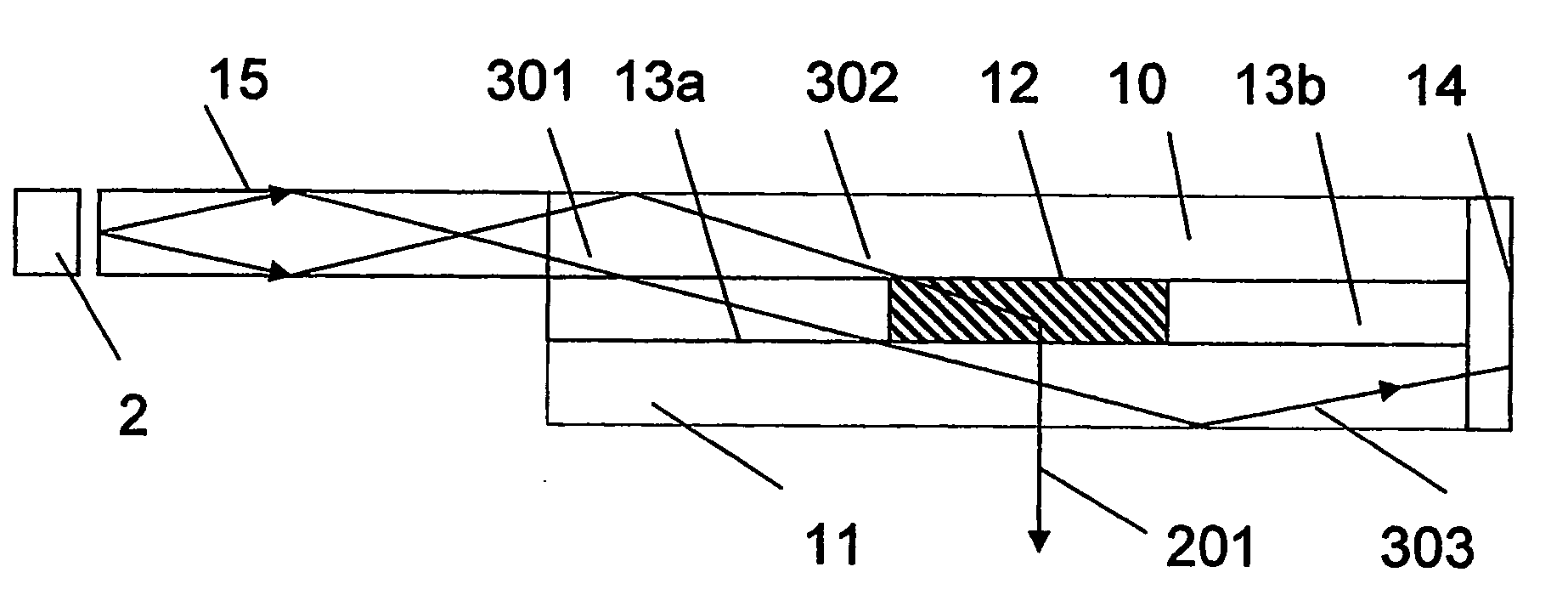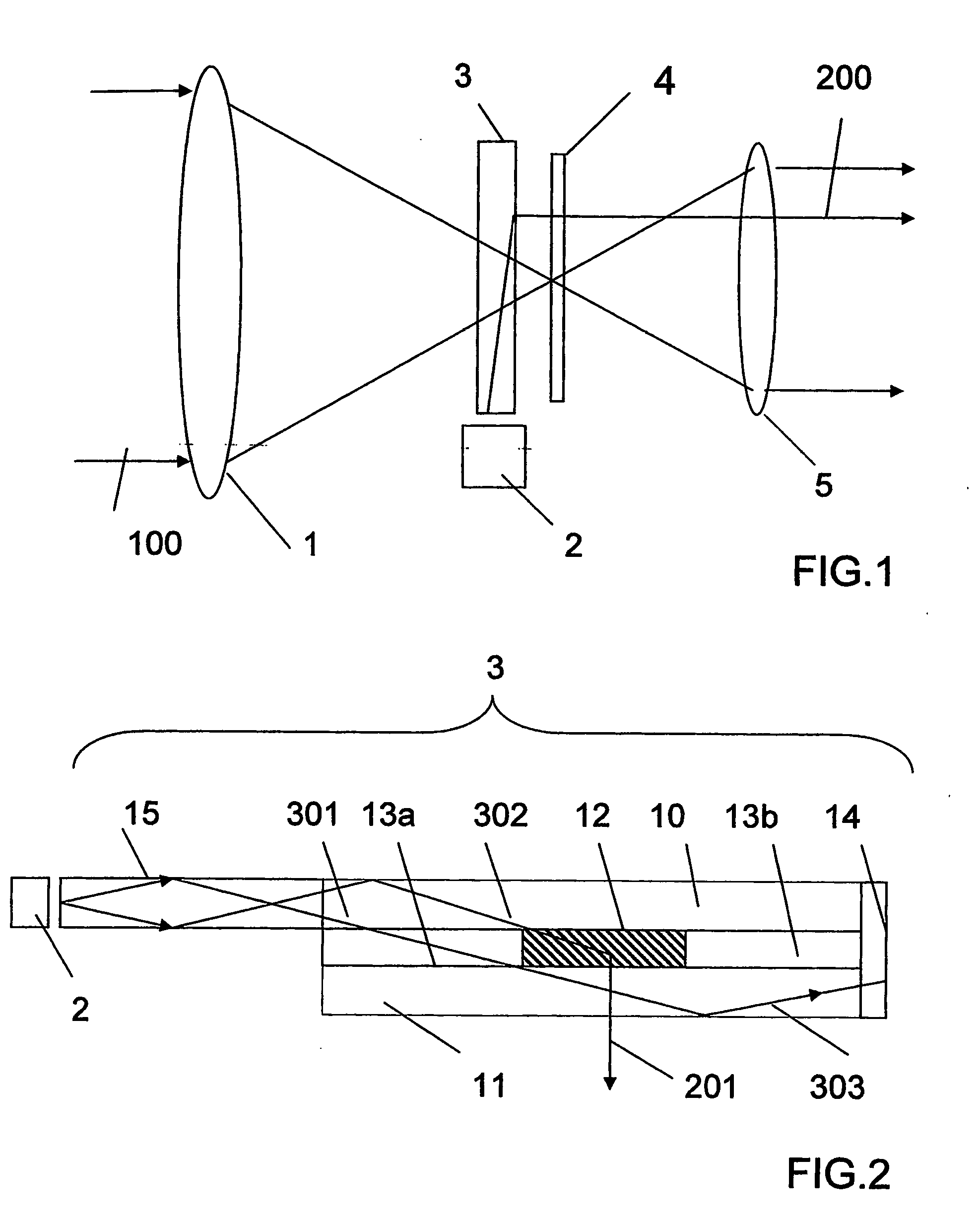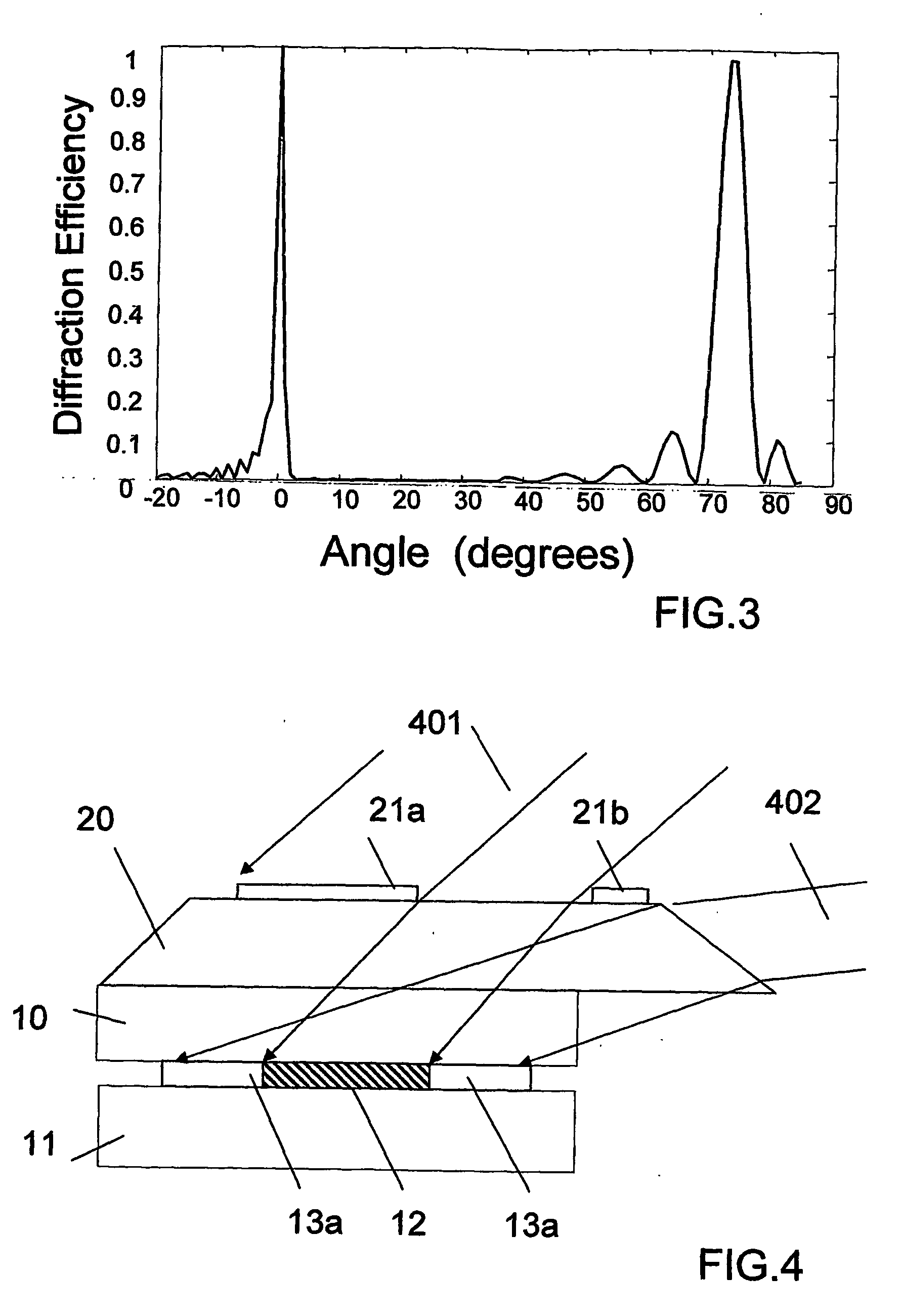Switchable viewfinder display
- Summary
- Abstract
- Description
- Claims
- Application Information
AI Technical Summary
Benefits of technology
Problems solved by technology
Method used
Image
Examples
Embodiment Construction
[0019] The invention will now be further described by way of example only with reference to the accompanying drawings. FIG. 1 shows a schematic unfolded side view of a Single Lens Reflex camera comprising an objective lens 1 which forms a focused image of an external scene on a diffusing screen 4, a symbol generator 3 which projects images of symbols onto said screen, a Light Emitting Diode (LED) 2 optically coupled to the symbol generator and an eyepiece lens 5 through which an image of the scene can be viewed. The symbol generator is transparent to external light rays generally indicated by 100. In FIG. 1 the path of the light from the symbol generator is generally indicated by the ray 200. By placing the screen at the focal point of the eyepiece an image of the external scene with superimposed symbolic data is formed at some nominal comfortable viewing distance. The objective lens 1 and the diffusing screen 4 do not form part of the invention.
[0020] Turning now to FIG. 2 in whic...
PUM
| Property | Measurement | Unit |
|---|---|---|
| Wavelength | aaaaa | aaaaa |
| Color | aaaaa | aaaaa |
| Transparency | aaaaa | aaaaa |
Abstract
Description
Claims
Application Information
 Login to View More
Login to View More - R&D
- Intellectual Property
- Life Sciences
- Materials
- Tech Scout
- Unparalleled Data Quality
- Higher Quality Content
- 60% Fewer Hallucinations
Browse by: Latest US Patents, China's latest patents, Technical Efficacy Thesaurus, Application Domain, Technology Topic, Popular Technical Reports.
© 2025 PatSnap. All rights reserved.Legal|Privacy policy|Modern Slavery Act Transparency Statement|Sitemap|About US| Contact US: help@patsnap.com



